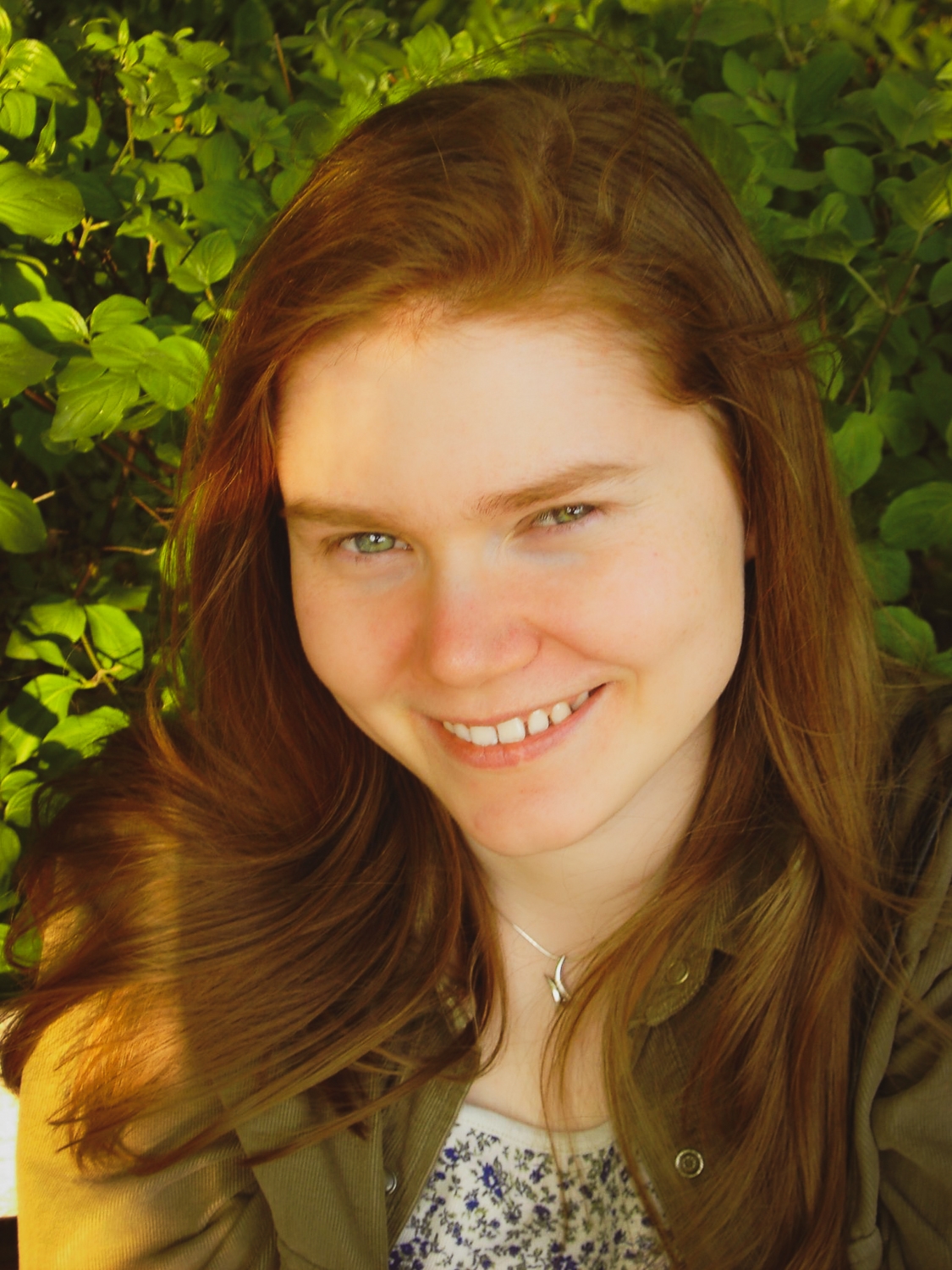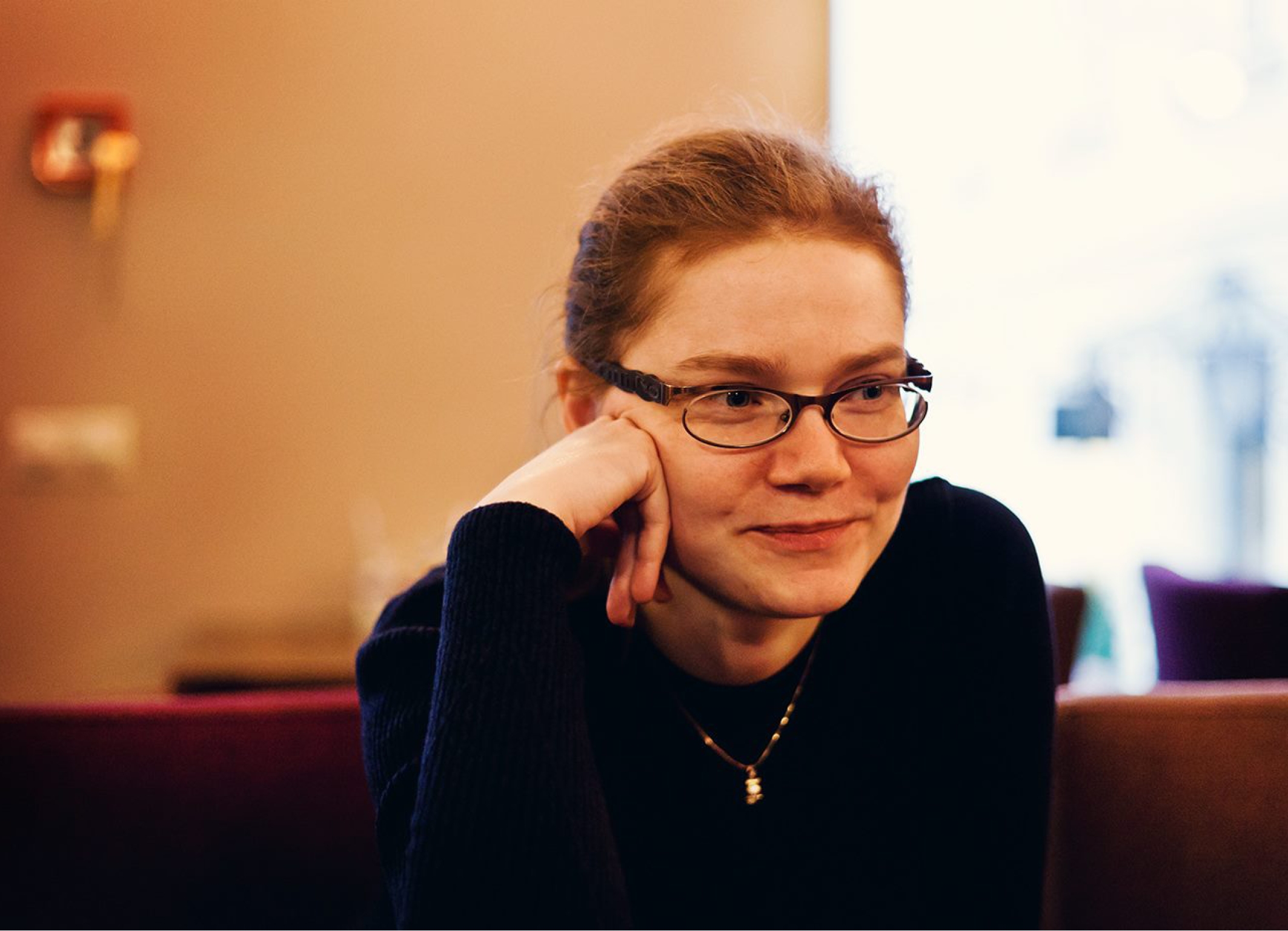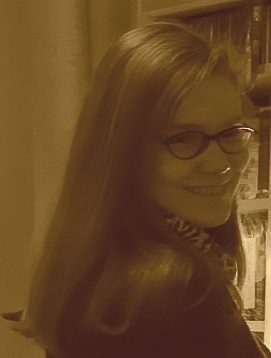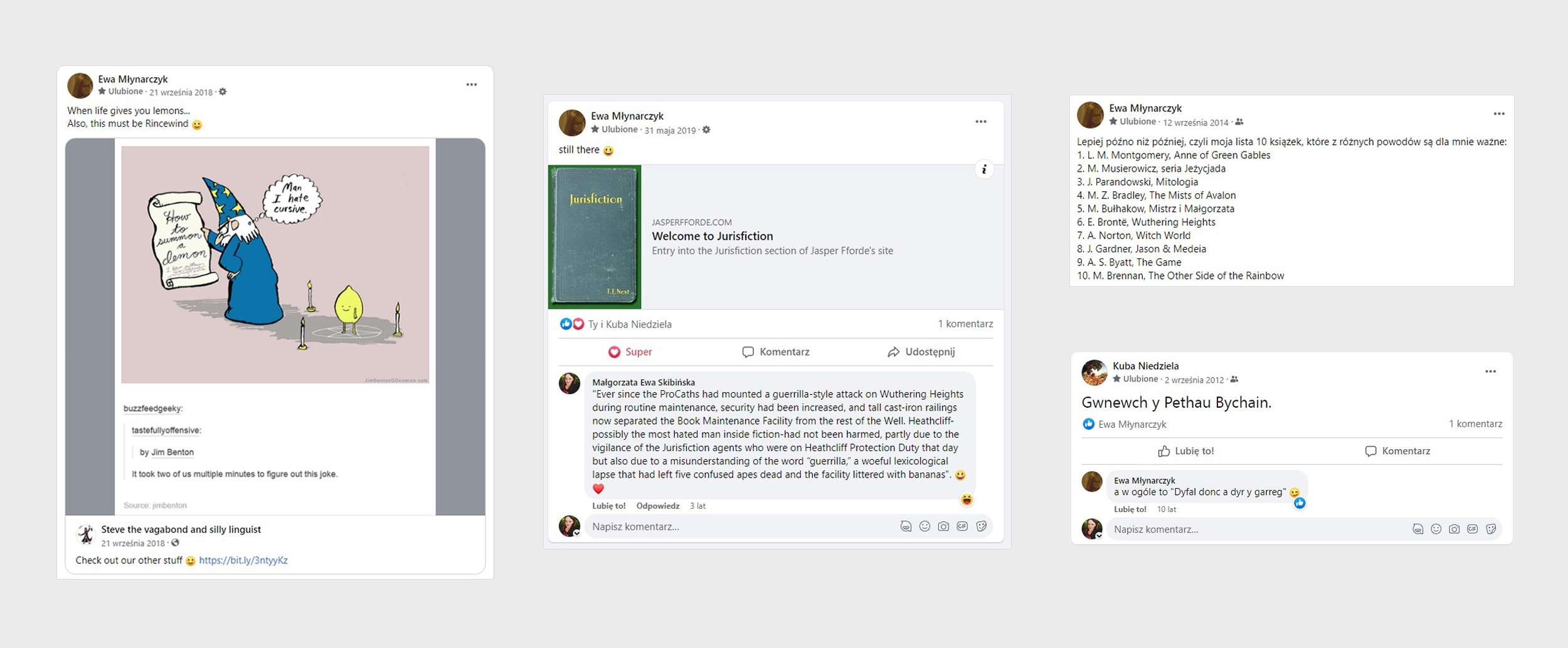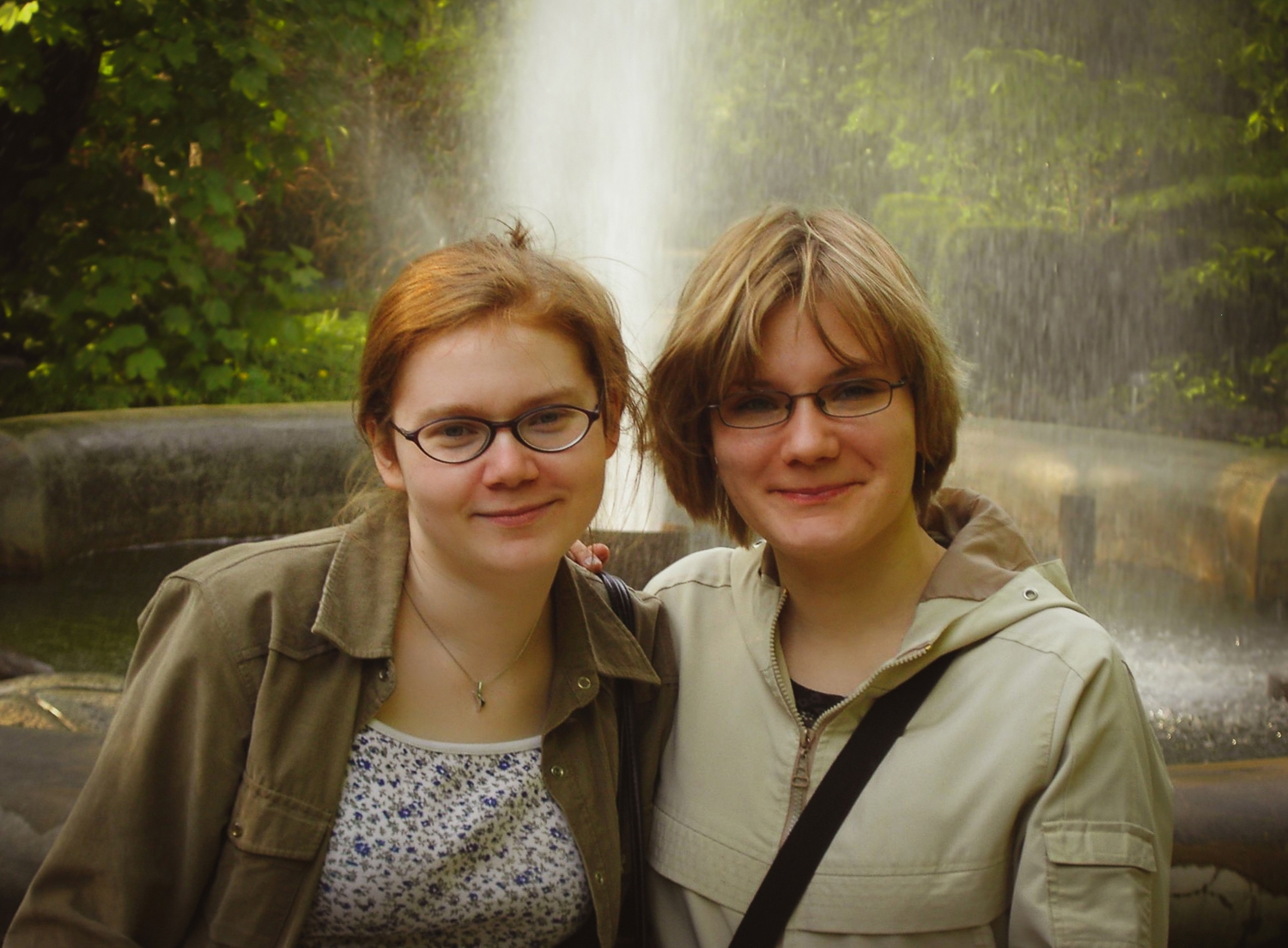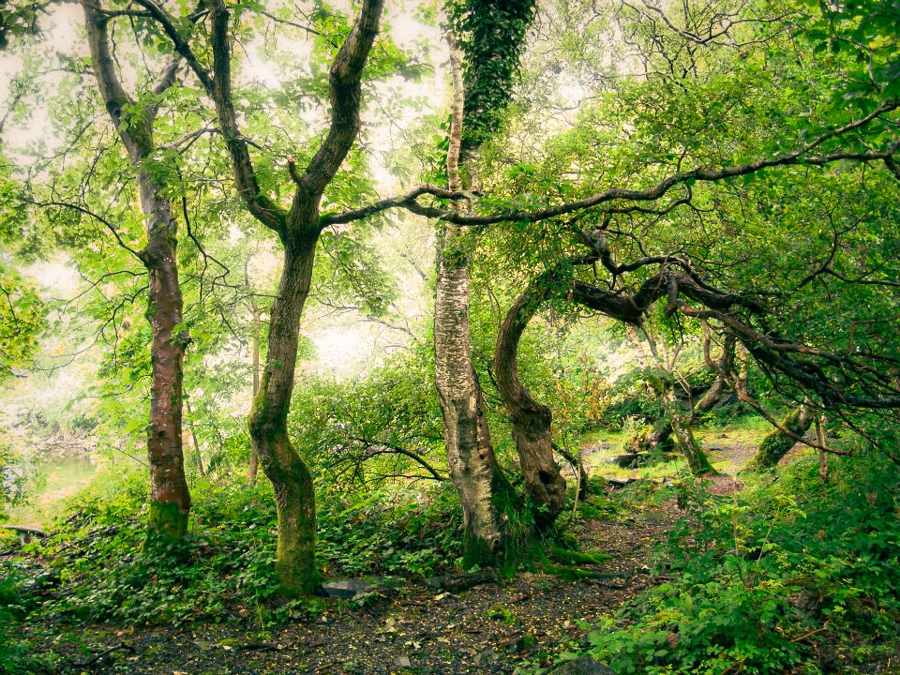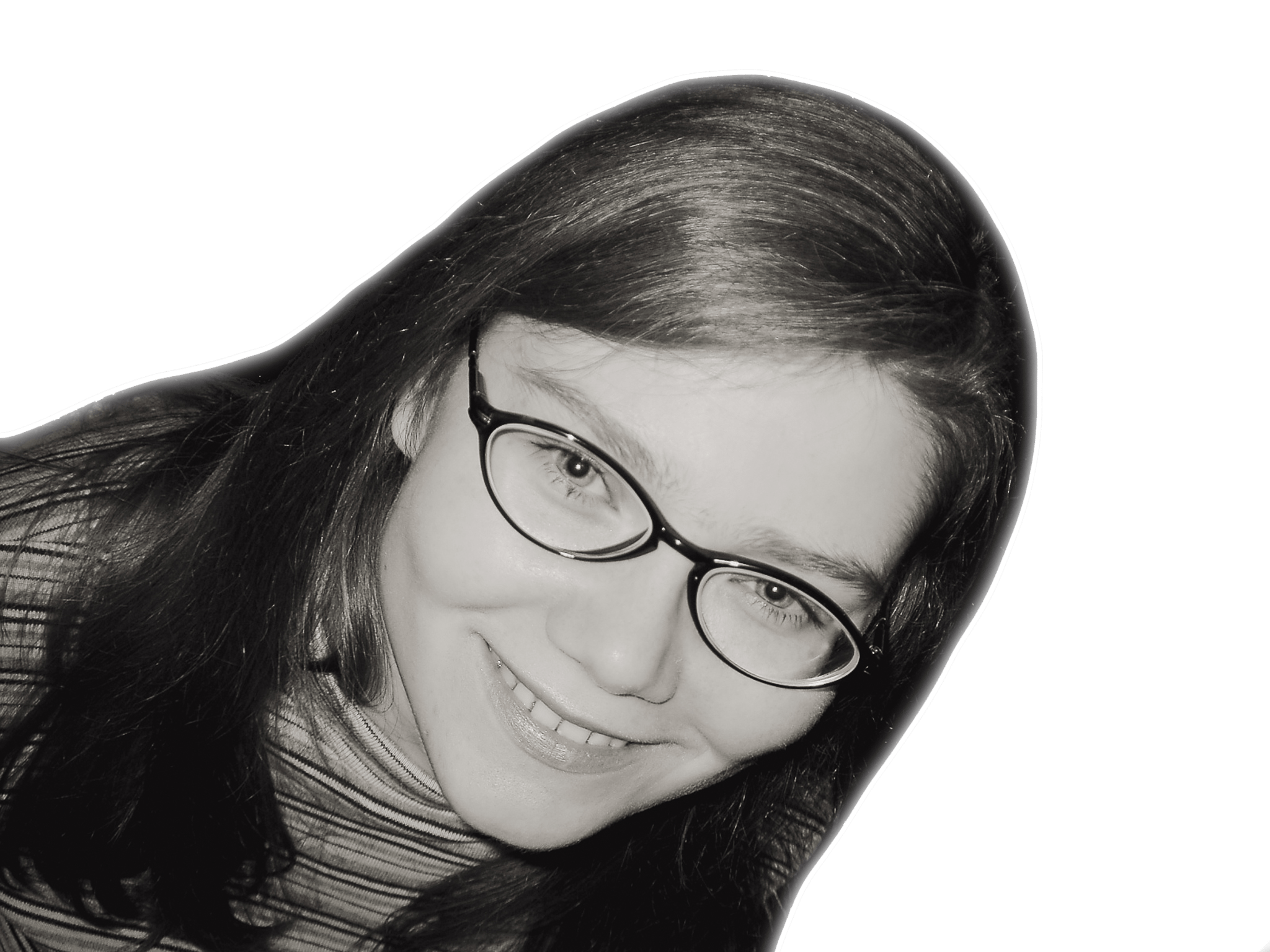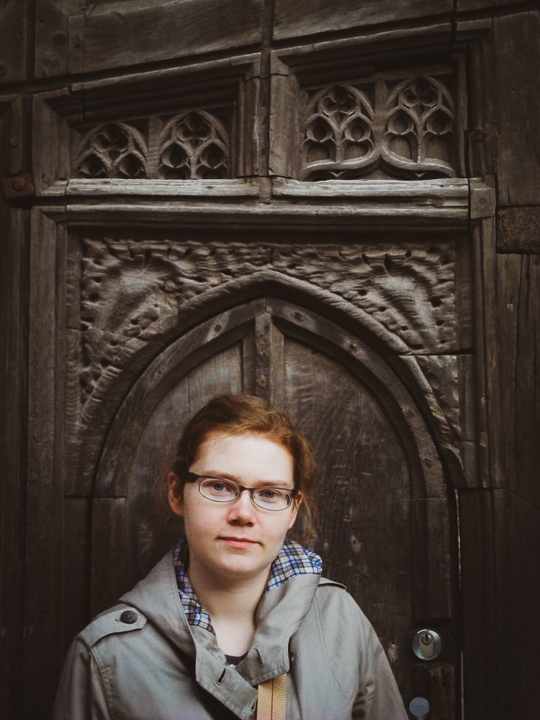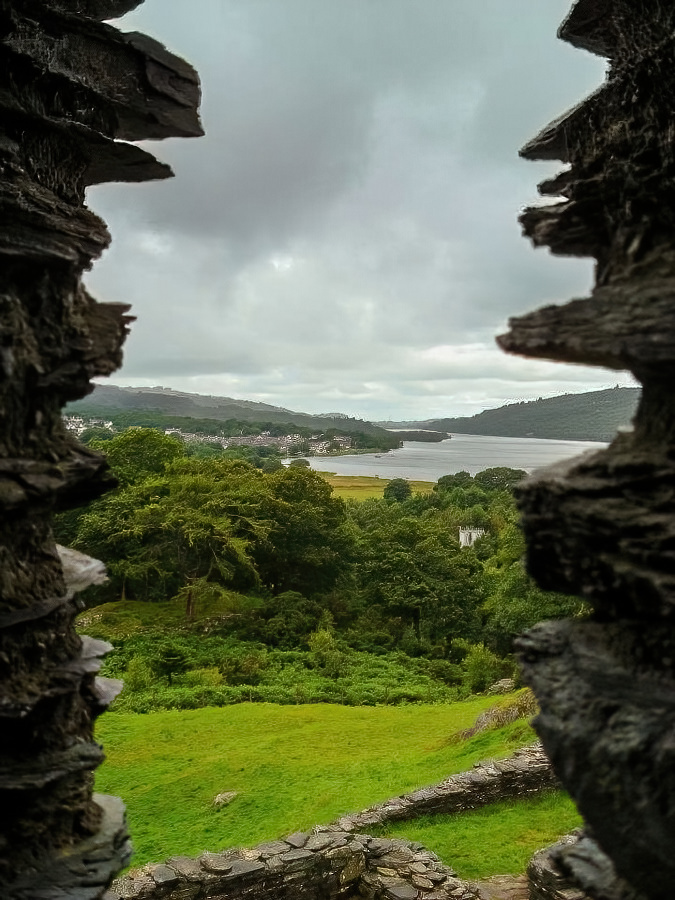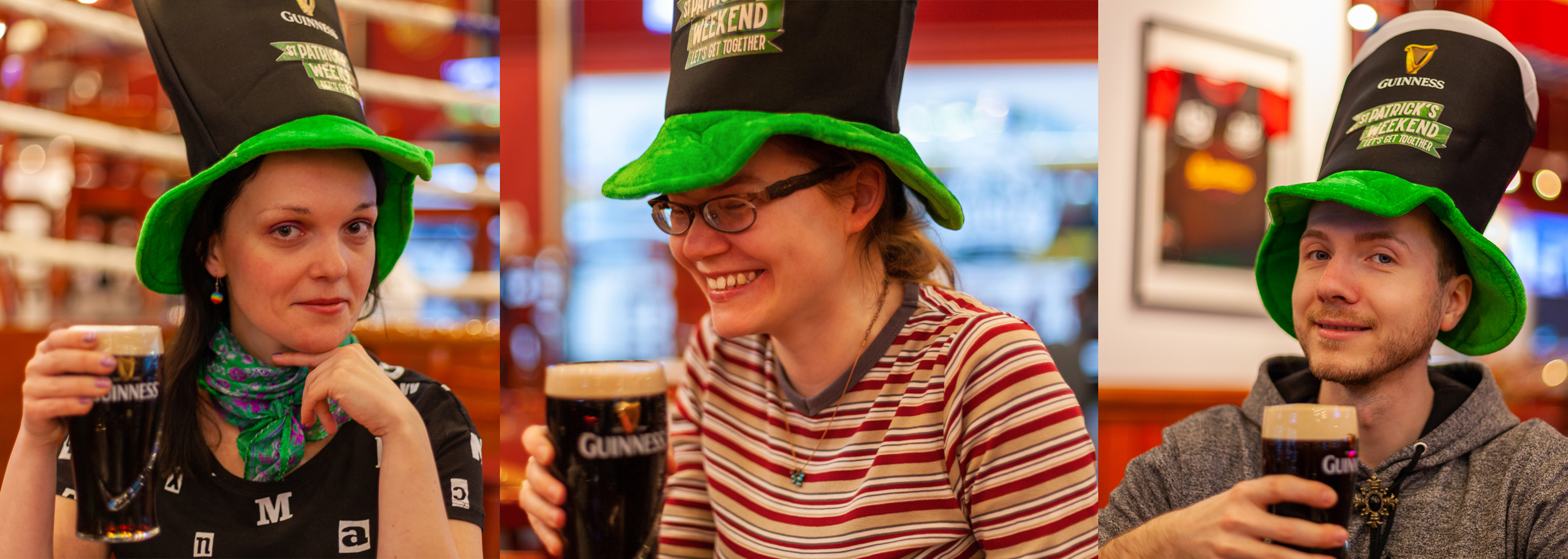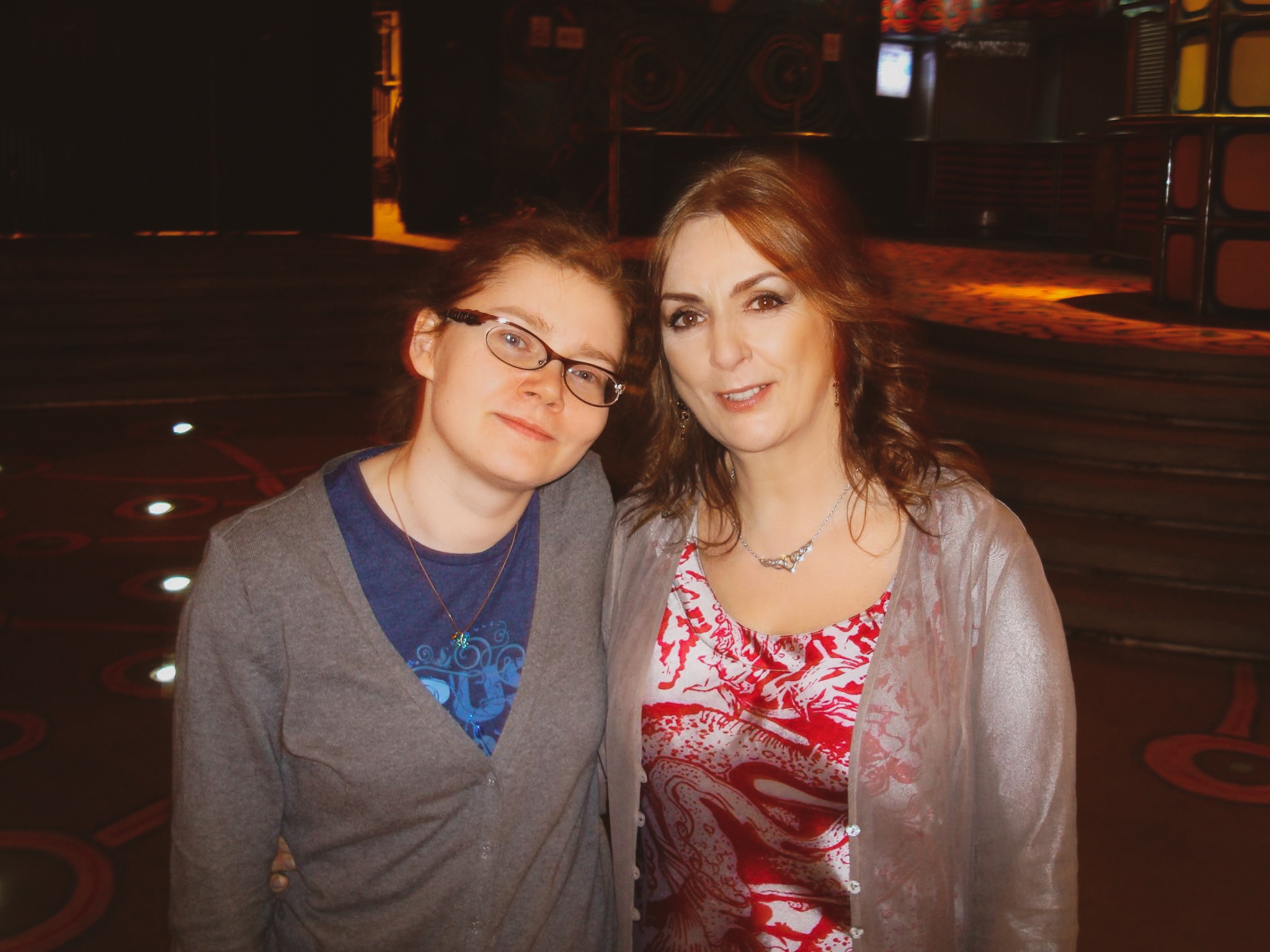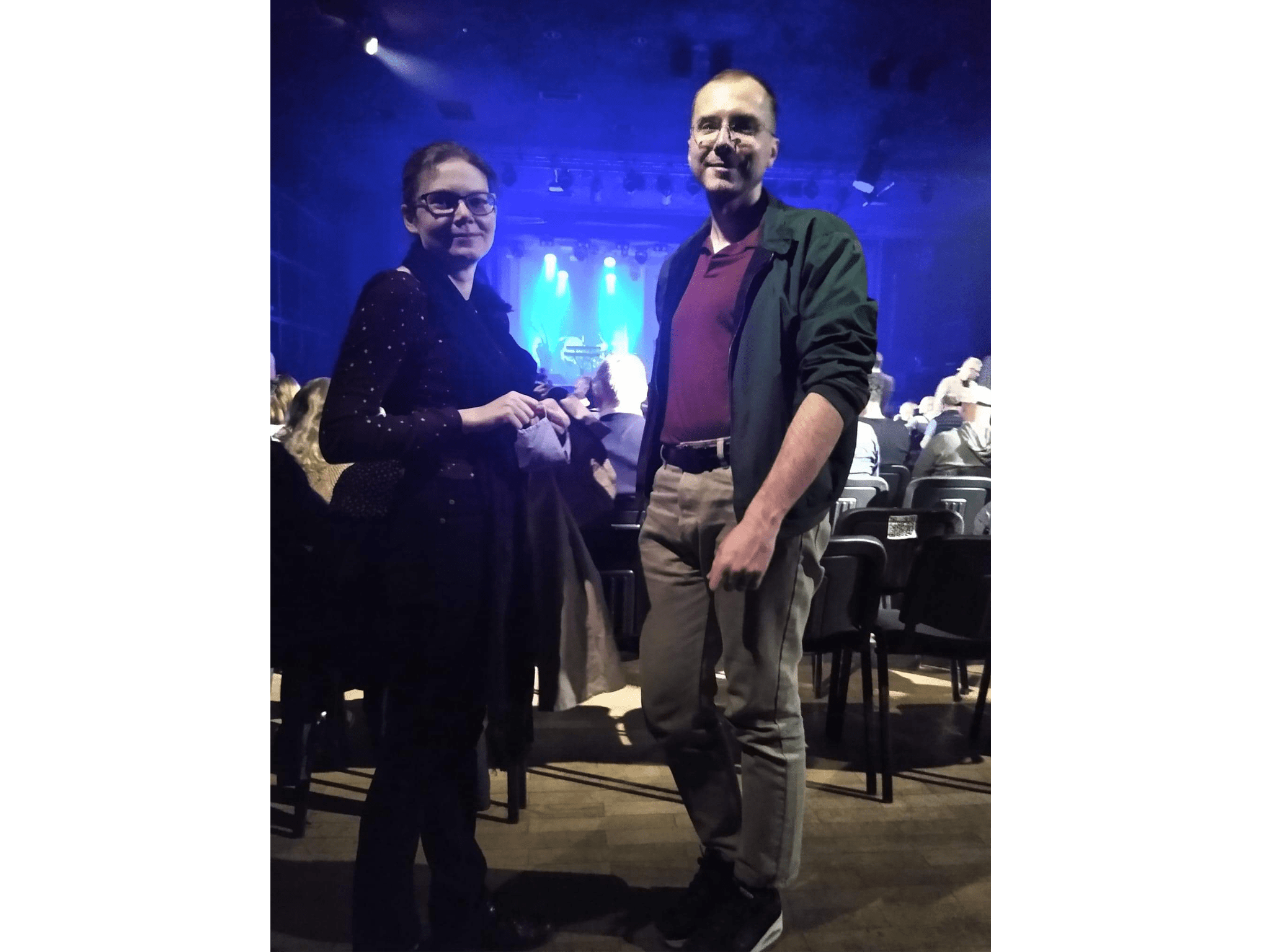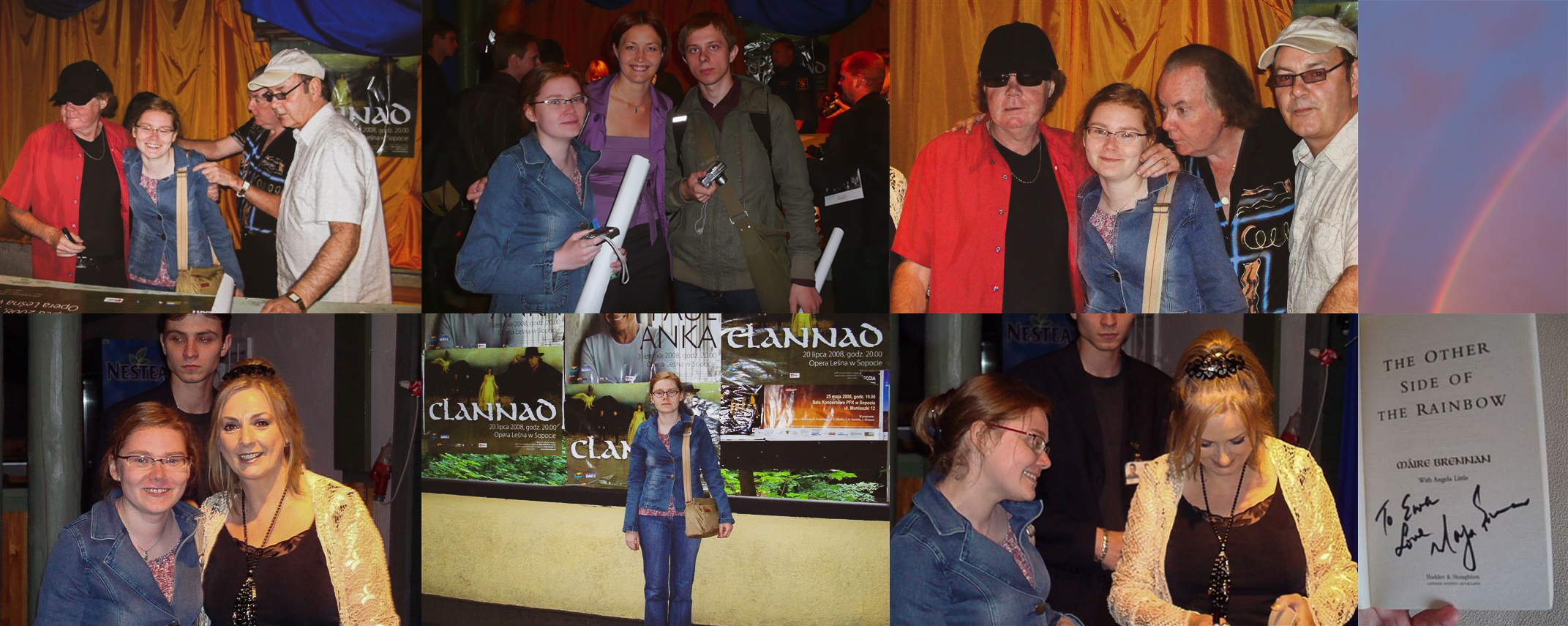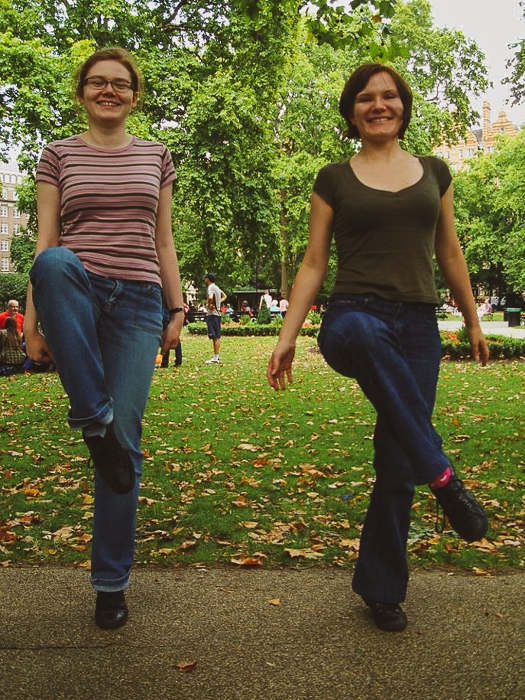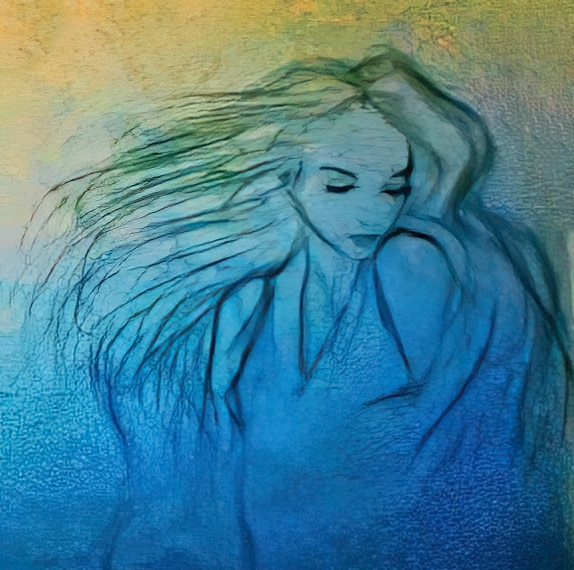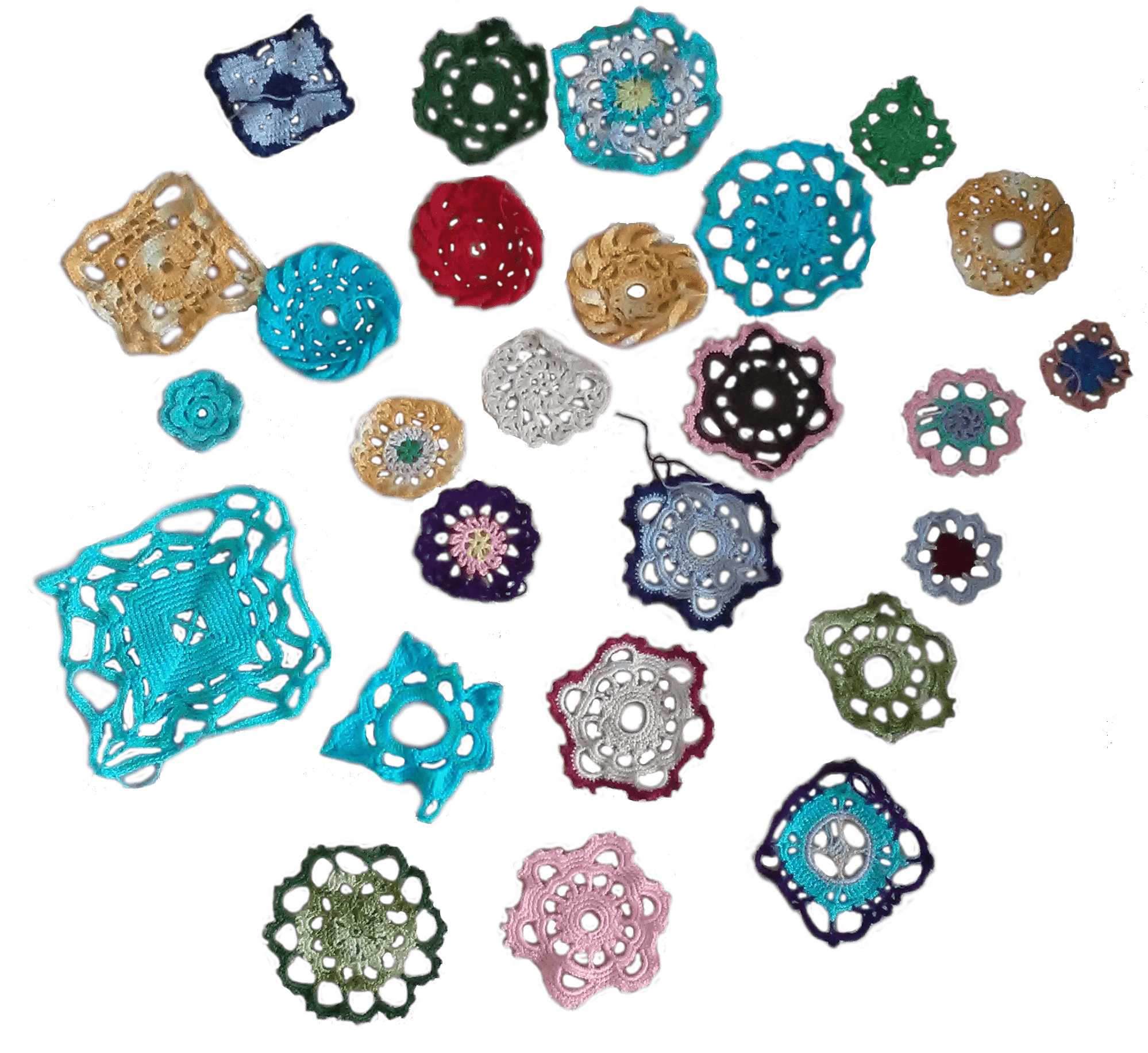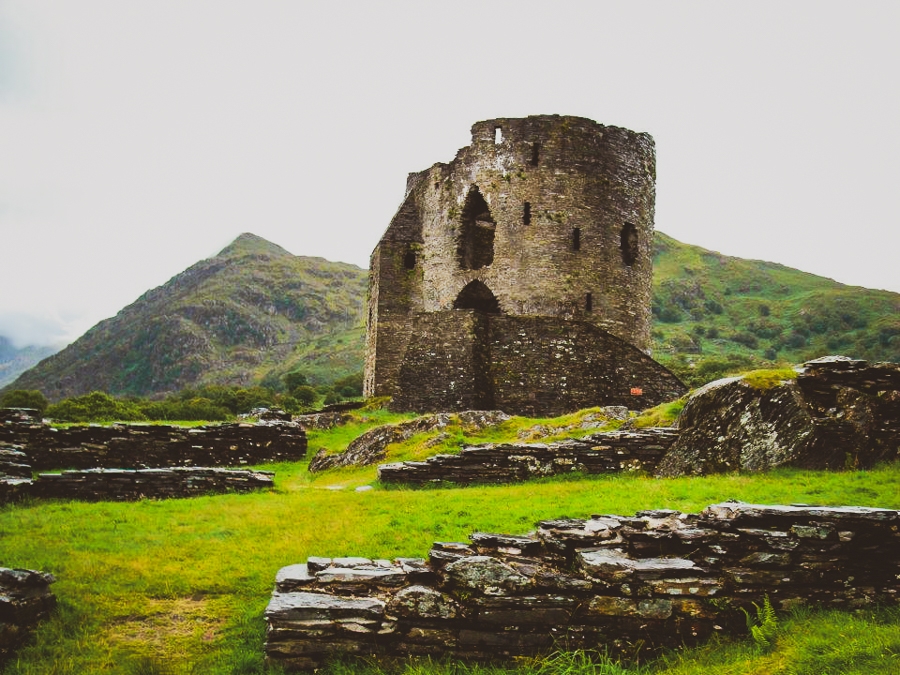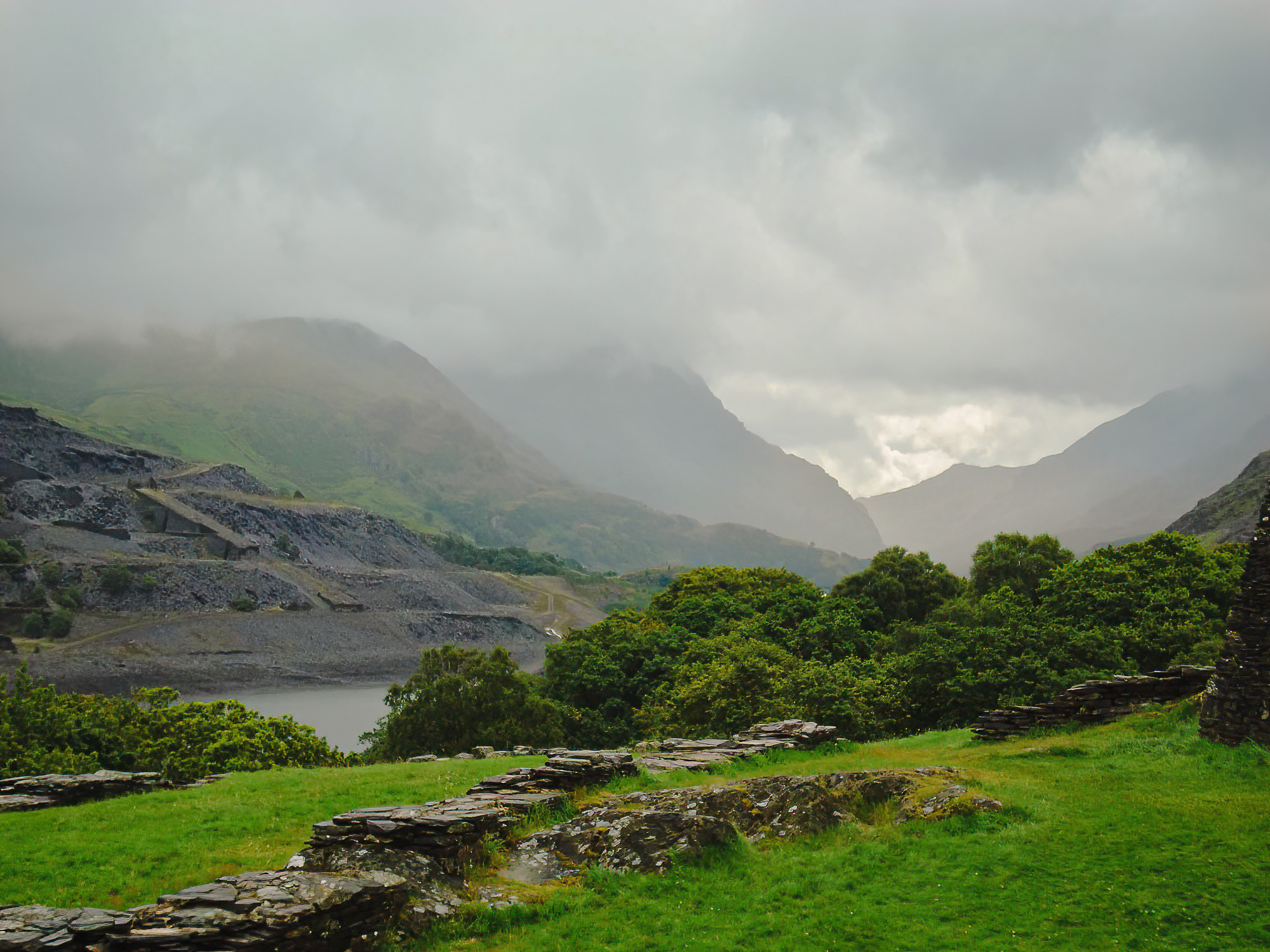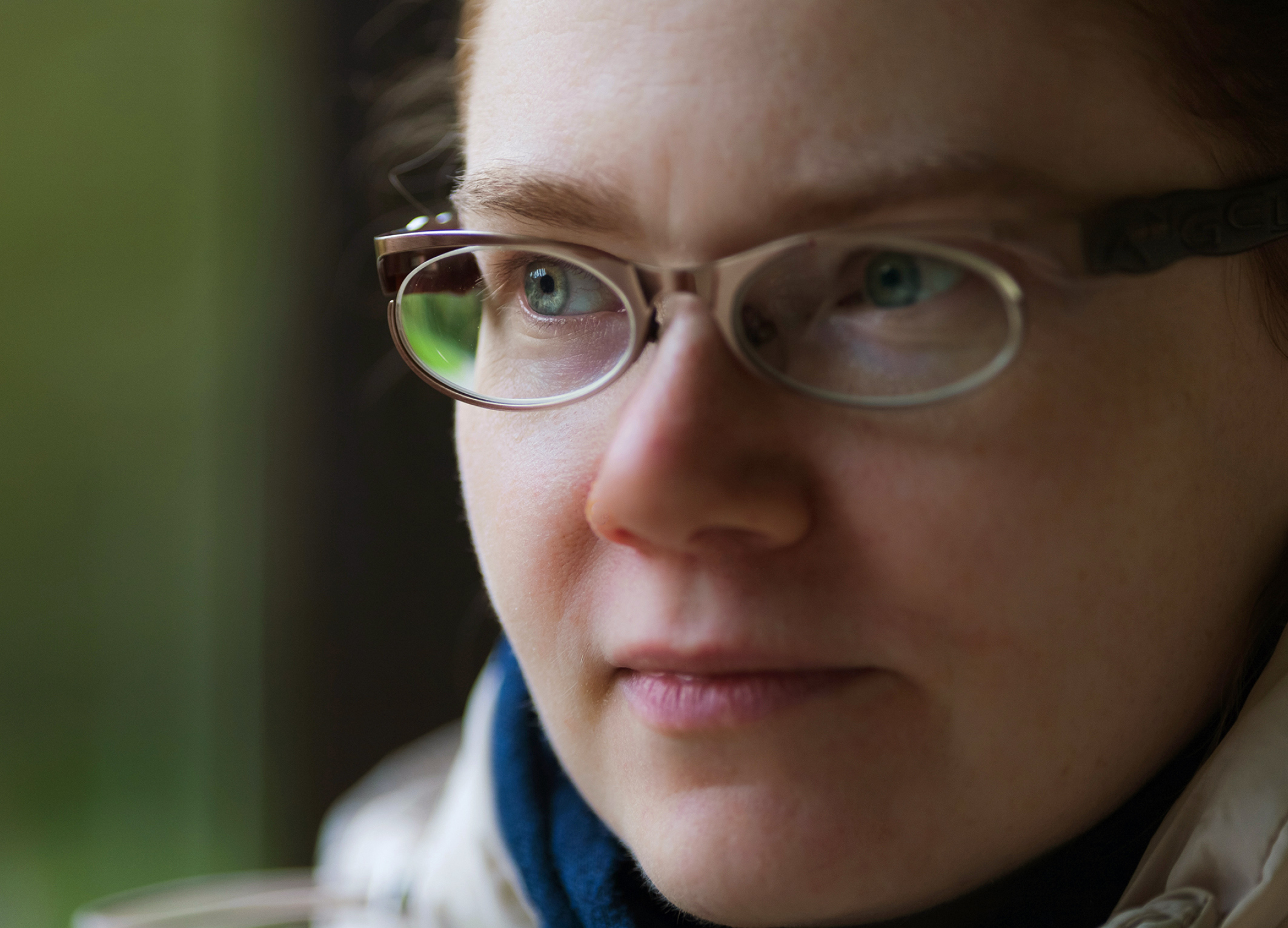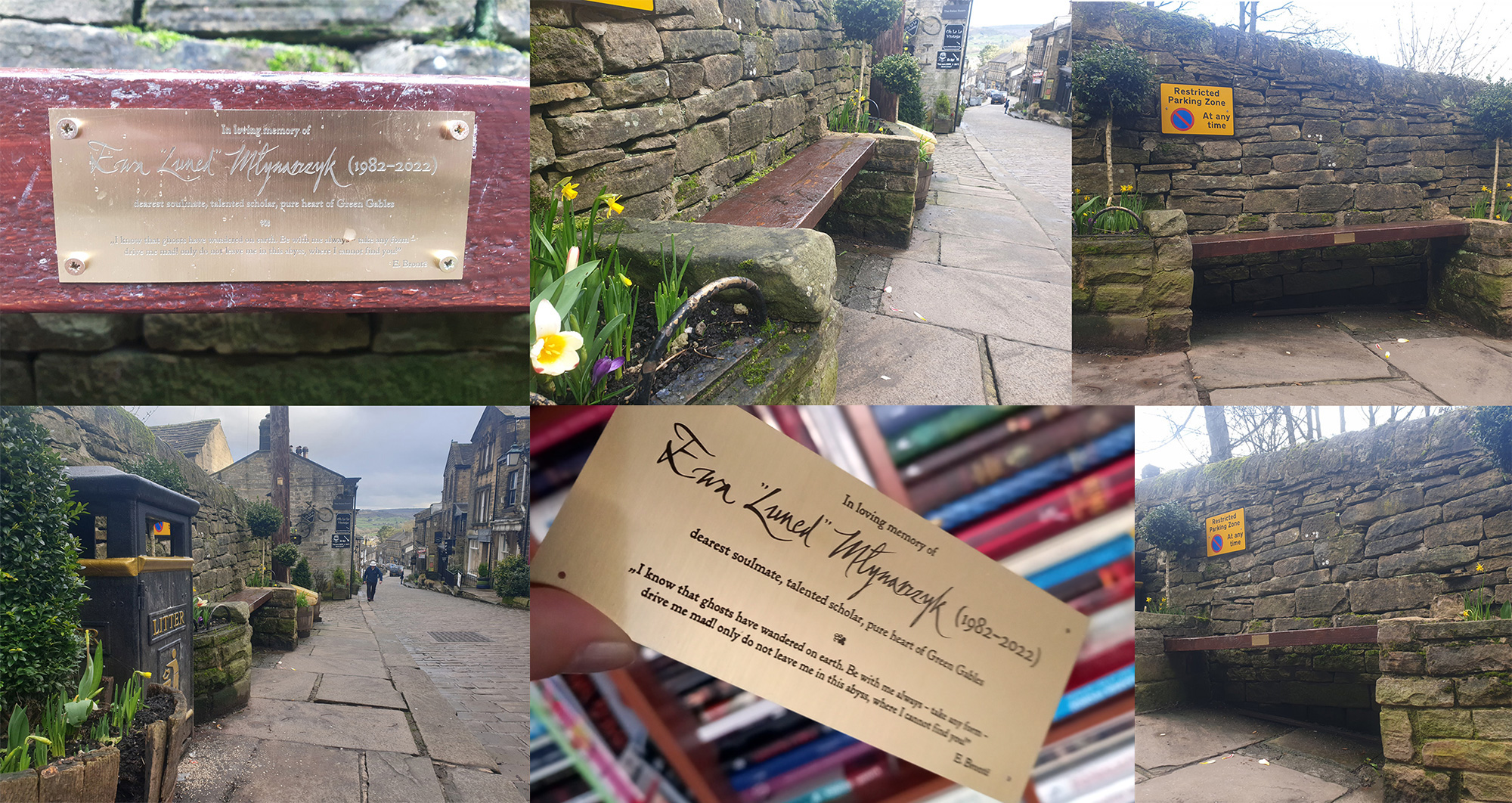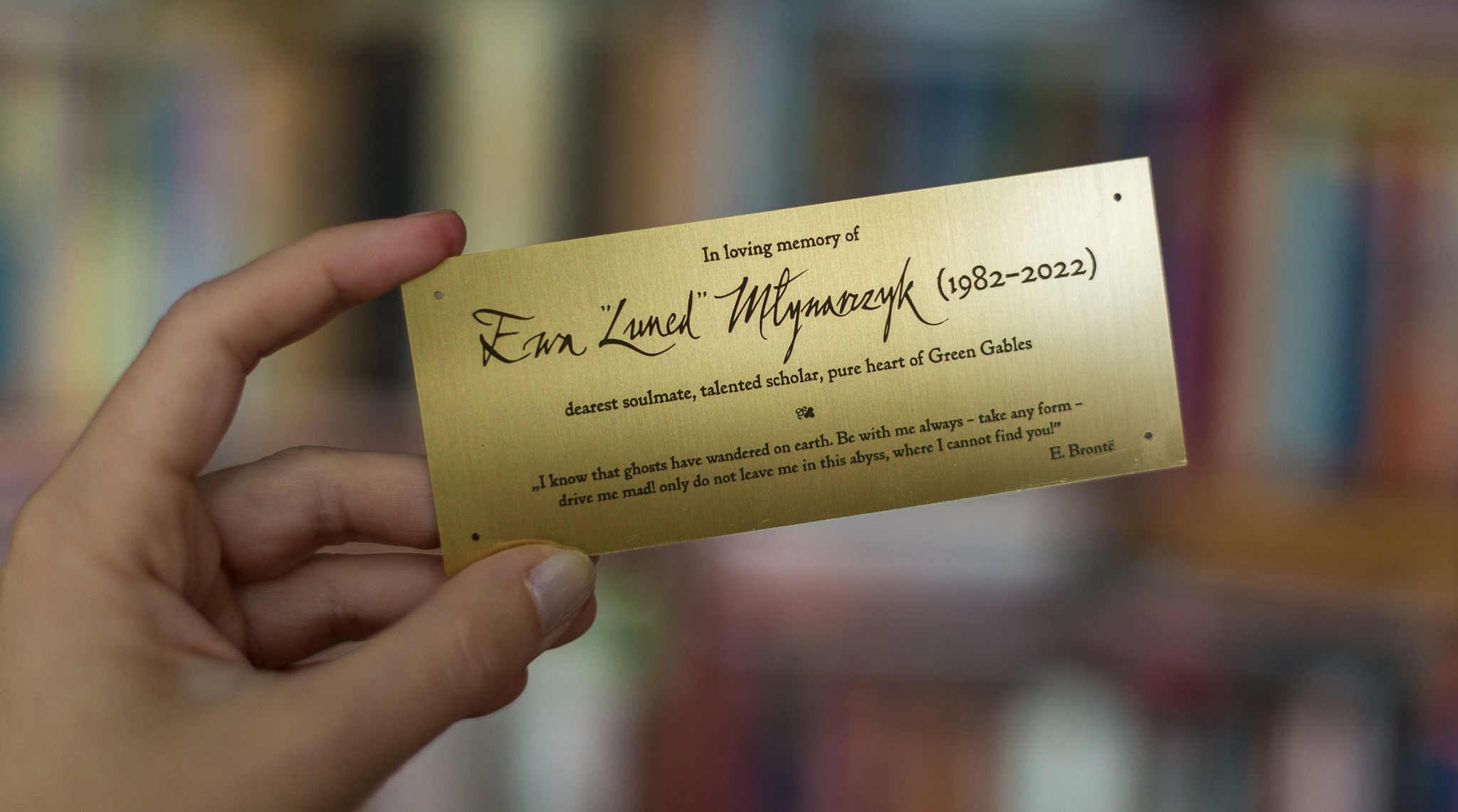
Click on the word/words marked in green to open the link; click on the selected image to enlarge it; click on tabs marked with “+” to open them.
For Ewa’s Parents — Mrs Anna and Mr Zbigniew
EWA JOANNA MŁYNARCZYK was born on July 17th, 1982 in Warsaw. She had written her quiet yet adventurous Book of Days with passion and perspicacity of a “tender narrator” for 40 years, before stopping in the middle of the sentence, after uneven battle with illness on November 26th, 2022. In the time she was given, she managed to engrave herself in letters of gold in memory of the companions of her life’s odyssey, and also to outline important pathways in fields that include Arthurian legend, English Post-Romantic and Victorian poetry, and comparative myth studies.
Ewa of Avalon
Among the numerous books that bent the twig of Ewa’s youthful literary sensibility, two played a particularly important role: Jan Parandowski’s Mythology and Lucy Maud Montgomery’s Anne of Green Gables. Reading the former of them turned out to be the beginning of the path springing from young reader’s fascinations, through thematically oriented exploration of cultural texts, especially Celtic myths and legends, to academic research conducted during the years of studying at the Institute of English Studies, which were later crowned with her doctoral dissertation.
The latter of the mentioned books was probably the most important literary chord defining Ewa’s “melody of existence”. The characteristics of Anne Shirley — a very sensitive, intelligent, ambitious, eloquent character, gifted with a vivid imagination with a heaped admixture of vis comica, craving dialogue like the deserts miss the rain — also reflect the most pronounced traits of Ewa’s personality which, however, had its own unique hue — opalescing with Pratchett’s “eighth colour of the rainbow”. It should be noted that both heroines: Anne of Avonlea and “Ewa of Avalon” had long red hair — like muses from the most famous works of the Pre-Raphaelites.
From Queen Anne (Shirley) to Queen Victoria, or Ewa at the University
Ewa studied English Philology at the Faculty of Modern Languages of the University of Warsaw. Her fascination with Celtic mythology was reflected in the choice of her academic path, the leitmotif of which, during her master’s degree studies, was the medieval Arthurian legend in the perspective of the Victorian era. After defending her master’s thesis, The Arthurian legend from the Victorian perspective in Tennyson’s “Idylls of the King” (2008), written under the supervision of Prof. Grażyna Bystydzieńska, she continued her research — as a doctoral student at the Institute of English Studies of the University of Warsaw — delving deeper into 19th-century British literature. The field of her interests at that stage included not only the poetry of Alfred Lord Tennyson, but also of William Morris, Algernon Charles Swinburne and William Butler Yeats, in whose works she explored motifs that are instances of reinterpretation of myths and legends, subjecting them to myth-critical analysis. The result of those years of research was a doctoral dissertation entitled Literary Appropriations of Myth and Legend in the Poetry of Alfred Lord Tennyson, William Morris, Algernon Charles Swinburne and William Butler Yeats — also written under the supervision of Prof. Grażyna Bystydzieńska and completed in 2022. It received positive reviews from Prof. Aleksandra Kędzierska (UMCS) i Prof. Ilona Dobosiewicz (UO), which Ewa managed to read in hospital, so in every heart she was dear to a hope remains that she felt happy in that moment. Shortly after, she passed away, although she would probably prefer to describe it in the most delicate words of her beloved song: “[…] carried away by a moonlight shadow.” It was not given to her to take the final exams nor to defend her doctorate, but as a lover of the Master and Margarita, she must have known that “manuscripts don’t burn”, and even if they did, her friends would follow them — and her alone too — even into the fire. This means that Ewa’s book will be published.
The Arthurian legend from the Victorian perspective in Tennyson’s “Idylls of the King”
The aim of this thesis is to show how the medieval Arthurian legend presented in Alfred Tennyson’s Idylls of the King actually differs from Malory’s original and how it reflects the Victorian worldview. The episodes chosen by the poet from the rich medieval sources reveal issues and values that proved particularly relevant to the Victorian middle class. In the gallery of characters, we can distinguish both positive male and female role models, as well as the negative ones, condemned attitudes of an unfaithful wife or a seductress devoid of any sense of morality. The Victorian crisis of faith, and the hero-worship resulting from it, become particularly visible in the depiction of King Arthur himself, while his reflections lend the piece a parabolic and timeless dimension. Moreover, the work attempts to answer the question to what extent Tennyson’s narrative poem meets the criteria of an epic and at the same time refers to an idyll suggested in the title of the work.
Ewa Młynarczyk [translated by Jakub Niedziela]
source: link
In years 2010–2012, as a doctoral student, Ewa was a Secretary of the Board of the Institute of English Studies. She also participated in the work of the Recruitment Committee of the Institute from 2009 to 2011, and in 2010–2013 she represented her institute at the Open Days of the University of Warsaw. She fulfilled her duties responsibly, conscientiously, with full commitment and passion. People whose academic paths crossed with Ewa’s unanimously emphasize her uniqueness, erudition, kindness, reliability, modesty and excellent language skills.
Lenses and Learning*
Ewa is also the author of scholarly articles, which she published between 2010 and 2015. One of them, entitled Alfred Tennyson’s Visions of the Otherworlds and the Vocation of the Poet, originally presented as a paper during the 13th PASE conference in 2014, earned an award as the best text among the works sent by doctoral students. All her articles have been made available — with the consent of the publishers — on this website. Reading them is like a journey — with the Guide — to spaces inhabited by archetypal figures of imagination, where the boundaries between epochs are blurred, and characters of mythological or legendary origin become exponents of beliefs, problems, dilemmas, apologies and passions that are also familiar to the modern world. In her texts, Ewa analyzes varied themes and motifs, such as: escapism, self-referentialism, individualism marked by alienation, the role of an artist in a polarized reality, a journey in search of identity, or eschatological explorations. She also discussed in detail: Camelot as an exclave of the absolute in the mortal world and an expression of the Victorian longing for spirituality, the destructive aspect of the medieval concept of courtly love in Alfred Tennyson’s literary appropriation, the poetics of the mask in the Victorian dramatic monologue as an innovative form of artistic expression, creative provocation and aesthetics of transgression in the poetry of Algernon Charles Swinburne, etc. Noteworthy are also Ewa’s reflections on poetic exemplifications of dichotomous attitudes, sentiments, and values that strongly marked the 19th-century sense of the world. This issue finds expression in the aforementioned article Alfred Tennyson’s Visions of the Otherworlds…, in which the symbolism of idyllic (other)worlds and calm waters, combined with an inert existence succumbed to the idea of art for art’s sake and escapism, is confronted with the symbolism of a stormy ocean and wandering, associated with the attitude of social involvement of a mature artist.
* See: The Romantic by Adam Mickiewicz, translated by W.H. Auden.
Faith and Feeling — Ghosts of Gardens
Another dichotomy is illustrated by the works subjected to comparative analysis in the poignant article The Ghostly Gardens of William Morris and Algernon Charles Swinburne. The titular gardens, or rather ghosts of gardens, belong to the vanitas themes; as places that are the antithesis of locus amoenus, deserted and subjected to a kind of “sepulchralization”, they illustrate the transience of the earthly world. However, while the garden in Swinburne’s nihilistic stance resembles a place that Anne Shirley would describe as a “graveyard of buried hopes”, and thus symbolizes the irreversibility of death and its triumph over life, the garden in Morris’s poem resembles an inner landscape in its own way — of a character in mourning after the loss of a loved one, and is situated as if on the border of two worlds, being neither a cemetery nor, yet, a paradise. This symbolic “borderliness” results from love that knows no borders and can overcome death and — as Ewa notes — “survive beyond the grave”, giving the longing person hope to meet the lost one again, and the strength to look for a way to them within given lifetime — and maybe also within life itself. Thus it is not without reason that an excerpt from Morris’s work has been used as the motto on this website, and the corresponding illustration, created with Ewa in mind, and referring to the signposts close to her, creates a space where she can become present, and where further encounters with her would be possible — those mediated by the reading of texts of her authorship, as well as those dependent on individual sensitivity and belief.
„So ghostly then the girl came in
I never saw the turnstile twist,
Down where the orchard trees begin
Lost in a revery of mist. […]
I took one deep breath of the air
And lifted up my heavy heart;
It was not I who trembled there,
But my immortal counterpart.”
R. Hillyer, Watching
„I know a little garden-close,
Set thick with lily and red rose,
Where I would wander if I might
From dewy morn to dewy night,
And have one with me wandering.”
W. Morris, A Garden by the Sea
Ewa has often emphasized that mythological and legendary narratives were for the poets she discussed “not just mere stories, but important sources of inspiration which provided them with a means to express themselves and, perhaps inadvertently, the spirit of their times.” It is hard to resist the impression that just as for Tennyson, Morris, Swinburne or Yeats, ancient and medieval figures of imagination became poetical masks, under the cover of which they could make numerous individual reckonings, so also for Ewa some subjects were not taken up accidentally and often they were a veiled form of articulation of her personal feelings, dilemmas, delights or fears. She certainly shared the doubts often expressed by, for example, Tennyson and Morris, who were convinced that great literature had long since been written, and therefore wondered if they could create something new that had not already been expressed in other words, “like petals of flowers gathered in some distant land and preserved within the pages of his book” (see Tennyson and Morris Read the Classics: Victorian Portrayals of Œnone). Similar thoughts accompanied Ewa in the context of academic work. She often asked herself if her voice could bring anything new to the research on a given topic. Such questions stemmed largely from her modesty and humility, at the same time reminding that dubito ergo sum.
Grinning Jurisfiction Agent
As a researcher, Ewa was characterized by traits that a medieval scribe would not be ashamed of: she was extremely meticulous, insightful, ambitious, hardworking, patient, and at the same time full of humility, respect and philological sensitivity towards written word. She tirelessly sought to explore all available sources that were related to the subject of her interests, and formulated her conclusions in the most concise and clear way, always “giving the proper word–to thing!.” The conversations she had were brilliant, deeply thoughtful, and long as comet tails (or tales) in co(s)mic space. In a way, they continue to this day in the “intertextual nebula” — death did not interrupted them. Even from her comments on social media, often inlaid with cultural references, there was a lot to learn from. Ewa had a charm about her that reminded of the intrepid Jurisfiction Agent of the Literary Detectives, Thursday Next — a character from the novels of the Welsh writer Jasper Fforde — who used to make exciting journeys within and between texts, battling grammasites, and maintaining integrity of fiction to save, once in a while, the world from destruction. At this point, it is difficult not to draw the analogy also with the character of Philomena Cunk, whose British humour evokes memories of Ewa’s cheerfulness – after all, she also could ask, with a mischievous blink in her eye: “Who was Ron — the one who signed his works By Ron?”. For wherever she was, she always tried to conjure the crescent moons of smiles on the faces of her interlocutors. You can be sure that if she were to comfort John Keats himself, she would lighten the minor tone of his words in a… wink of an eye:
„And this is why I sojourn here,
Alone and palely loitering,
Though the sedge is withered from the lake,
And no birds sing.”
J. Keats, La Belle Dame Sans Merci
with a surprising punchline, sealing a philological relationship of literary tradition with beloved icons of pop culture:
„If you’re all alone
When the pretty birds have flown
Honey I’m still free
Take a chance on me.”
B. Andersson, B. Ulvaeus, Take a Chance on Me
Book of Closeness
Everything that defined the portrait of Ewa as a scholar, and helped her spread her wings in the intertextual space was also reflected in the interpersonal space where she patiently, tenderly and carefully wove a network of close relationships. The other person was like an intriguing novel for her, which she did read with engrossment and interest, memorizing the smallest details and storing them with the greatest delicacy between the pages of her Book of Days, like dried flower petals. She devoted a lot of heartfelt, unselfish attention to everyone who had the opportunity to get to know her closer, trying to keep her knowledge about other people’s affairs: passions, activities, successes, problems, and important life events always up to date — yet carefully and discreetly. Through these efforts, Ewa empathically absorbed many of other people’s fascinations, which was one of her most subtle and touching ways of building closeness. In a world where people used to think that “we are all episodes of each other”, Ewa was an “unmoved mover” — loyal, devoted, forgiving, calm as a spreading oak, and faithful as a river. She walked through her life to the rhythm of the words:
„Change the words, don’t change the meaning
Change the hands, but don’t change the healing
Change the tune, but don’t change the feeling
Change the heart, but don’t change the needing.”
M. Brennan, Whisper to the Wild Water
Between Avalon and Avonlea
Ewa’s scholarly explorations and personal life intertwined, creating an intricate system of interconnections similar to a Celtic braid. At this point, it is worth recalling, once again, her beloved literature, which no other book has ever managed to dethrone — Anne of Green Gables. One of the most important authors for Lucy Maud Montgomery herself, as well as for her most famous character — Anne, was… Alfred Lord Tennyson, and a fragment of his Idylls of the King was commemorated in the staging arranged by Anne:
L.M. Montgomery, Anne of Green Gables, Chapter XXVIII [online: link].
Therefore, it is not difficult to guess what influenced the philological inclinations of another red-haired (and golden-voiced) heroine and symbolically marked the beginning of a long academical chapter in her life. This literary and biographical duet is reflected in the artwork on this page, specifically in the corresponding signposts it features: Avalon (a Celtic paradise where, according to the legend, King Arthur is supposed to have stayed) and Avonlea (a fictional setting of L.M. Montgomery’s novel). A keen observer will instantly notice that it would be enough to add an e to Avalon to make it an anagram of Avonlea. In the discussed context, the missing (or wandering) E means more than a letter, and — somewhat contrary to grammatical rules — proves that times and places are inflected by persons, especially such as “Anne spelled with an e” and Ewa — “spelled with an a”.
Luned
Echoes of the Arthurian legend resounded many times in various areas of Ewa’s life. For it is from this literary tradition whence the character whose name she took as her pseudonym — Luned — does have its origin, although in its Welsh version. This heroine (also known as Lunete, Lunette or Lunet) appears in e.g. the chivalric romances: Yvain, the Knight of the Lion by Chretien de Troyes and Owain, or the Lady of the Fountain, being a part of the Mabinogion. She is presented as a maid servant endowed with magical powers, and a trusted adviser to the widowed Lady of the Fountain. Although she is a supporting character, she has an essential influence on the course of events: she saves the lives of others and leads first to marriage and then to reconciliation of the feuding main characters. The role of Luned/Lunet(t)e seems to be well defined by the etymology of the name: lunette in French means “little moon” — it is also a crescent-shaped architectural element, usually serving as a small window above door or main window, in order to integrate them into the space topped with an arch. Window is a symbolic link between the outside and the inside world, it is through a window that light and fresh air enter the interior — literally and figuratively, it opens (or closes) the access to various possibilities. And this is exactly the role Luned plays in the Arthurian legend — she is a driving force in the story, a character who is mysterious, smart, loyal, reliable, full of distinction and modesty, knowing the importance and power of suitably chosen words, and of discreetly provided help. Not without significance in this context is the convergence of the English words window and widow — referring to Luned and Lady of the Fountain. Interestingly, in the literature on this thread of Arthurian provenance, one can find opinions in the light of which Luned appears as a more interesting and much more complex heroine than the Lady of the Fountain, as clearly predisposed to forge deeper relationships, and thanks to her charm, she somehow “steals the show” among the main characters. In the piece by Chretien de Troyes, Lunete is presented in following words: “And I call her the moon, who cannot be otherwise because of her sense and courtesy. […] The damsel’s name was Lunete, and she was […] prudent, clever, and polite.” Prudent, clever and polite — these are epithets that could also be used to describe Ewa, especially since the French word lunette in the plural (lunettes) means glasses, and these were, after all, her inseparable attributes.
Undoubtedly, Ewa — for her thoroughness in research — must have been aware of the mentioned aspects of the symbolism of her lunar “patroness”, together with the etymological nuances associated with the name, so the choice of such a pseudonym could not have been accidental. However, did she know that her actions, like those of Luned — undertaken throughout years, discreetly, with the greatest delicacy and in the shadow of her own modesty — had such a strong impact — and still affect — the lives of people dear to her? More likely, she was — like the moon — unaware of her influence on these tides:
„The moon upon the ocean
is swept around in motion
but without ever knowing
the reason for its flowing”.
R. Ryan, Anywhere is
Oriel Window
As “Luned”, Ewa was remembered by participants of various social media, in particular one discussion group — gathering mostly philologists and artists united by musical sensitivity shaped under the spell of the oeuvre of the Brennan family: the band Clannad and its singers who later continued solo careers — Máire Brennan, and the famous Enya — together with the author of her lyrics: the poet Roma Ryan. The aforementioned forum was founded in 2001 and was called Oriel [Window], after the piece from the album Shepherd Moons by Enya. It can be said that the group was a slightly more subtle incarnation of the Bloomsbury Group, functioning mainly in the virtual space, yet over the years it turned into a community of a small group of friends, two of whom accompanied Ewa until the end of her days on this side of life, and this website in memoriam is a testament to their love and devotion.
„Even, as I breathe
comes an angel to their keep.
Surely, if this is
promises are mine to give you.
mine to give…”
R. Ryan, Angeles
A signpost with the inscription “Leo’s Tavern” adorning the main picture refers to the real place on the map, which is the cradle of the music of Clannad: an Irish pub and artistic meeting place, founded in 1968 in Donegal by the senior of the Brennan family, Leo Brennan — father of Máire and Enya. In May 2022, Ewa had the opportunity to attend the farewell concert of her beloved band in Warsaw. The last song recorded in her ‘musical diary’ on the last.fm platform, listened to one month and a half before her death, was Angeles by Enya: https://www.last.fm/pl/user/Luned17
Music played a notable role in Ewa’s life: it was a source of emotions and admiration, a fuel of endless journeys across the score — “From Bissau to Palau, in the shade of Avalon […], From the deep sea of Clouds to the island of the Moon”, a driving force of imagination, a binder of many close relationships, on the lyrical level — a motivation to learn languages, and an inexhaustible mine of motifs, especially those reinterpreting myths and legends, which she explored with a music-loving and philological passion. Despite the development of technology with easier access to the resources of audio culture, Ewa remained a persistent and experienced radio listener — the same one who in her teenage years used to phonecall Radio Kolor during Marcin Sobesto’s broadcast to order a song, or ask about a particular piece she was looking for in a quest of a specific music query. This fidelity to ideals, perseverance in cultivating the exploratory attitude and the foundations of her own sensibility characterized almost all spheres of her life, making each of them a long-playing album.
„You were always there, there for me, stop me falling.
I can see the smile that shines from your eyes.
I believe the stars above me for keeping,
knowing that your love touched so many lives.”
M. Brennan, A Song in Your Heart
Evviva l’arte!
The cultural spaces of Albion and the Emerald Isle deeply influenced Ewa’s various activities, and the music of local provenance which she admires so much set in motion not only her imagination, as Ewa attended Irish dance classes for many years. At the same time, she was enthralled by figure skating. Thus, she walked through life with a skip in her step, embodying what she would certainly describe in the words of her namesake from her favourite J. Jarmusch film: “This self obsession is a waste of living, it could be spent surviving things, appreciating nature, nurturing kindness and friendship, and dancing.” She was very sensitive to such beauties of nature, and of her “little brothers and sisters” she was particularly fond of birds — the living embodiments of winged words and relatives of the dinosaurs (perhaps even Brontësaurus himself?) — especially owls, penguins, long-tailed tits, and kakapo parrots (“with their Victorian gentleman’s faces”). When she was not tapping rhythms on the dance floor or tapping the next sentence of her doctoral thesis on the computer keyboard, she liked to occupy her hands and tangled thoughts with a sketchbook, drawing the figures of her imagination closest to her heart, or with a crochet hook, honing the art of lace-making and creating laces — yes, of course: the Irish laces! In fact, every fruit of her work —whether academic or artistic — was a fine lacework.
In Human and Angelic Tongues
When limning the biographical portrait of Ewa, it is necessary to mention her greatest philological passion — learning foreign languages. She studied languages all her life, but also was a dedicated teacher of English by vocation, gifted with a beautiful British accent. She worked professionally as a lector — first at the University of Warsaw, and later in a few language schools. Ewa was a polyglot, a true lyrogon enchanted in a human body, fluent in several languages — of which English and Italian were the most important to her. For a long time she even entertained the idea of applying for Italian studies, but eventually decided to study English. She constantly sought to explore the ins and outs of the Irish and Welsh languages, for which she had a particular fondness. She was also intrigued by the Swedish, but used to joke around that she mastered it to the same degree as the Swedish Chef from The Muppet Show. Every text of culture she had found interesting, she tried to read and understand in the original. From her youth, she was inspired by the conviction expressed in the aphorism by Ludwig Wittgenstein: “The limits of my language mean the limits of my world.” She confirmed this belief on many occasions, but perhaps most notably during a trip to Wales as part of a research query, when she delightedly tried to encompass with her eyes the famous town’s name… Llanfairpwllgwyngyllgogerychwyrndrobwllllantysiliogogogoch. Her motivation to boldly push these boundaries was drawn from the already mentioned work by Roma Ryan — the author of the Elvish-inspired fictional Loxian language. Loxians are described as the people from the future, descendants of the Celts, who were supposed to migrate through space, and thus literally cross the borders of their world.
One is left with belief that Ewa now speaks fluently every “human and Angelic tongue” (or perhaps Angaelic?), and her voice will be heard by anyone who finds a way to continue a dialogue with her.
Neverending Story
The road to Wuthering Heights leads through Haworth — a village located in the Pennines, known for its association with the Brontë sisters, who spent there most of their lives. On the first day of spring 2023, at dawn, Haworth got richer with a handful of words from Poland that have been engraved on a brass plaque. Somewhere halfway up the steep Main Street, opposite the blue — like Enya’s dress in Caribbean Blue — antiquarian bookshop Hatchard & Daughters, a special bench appeared with a plaque commemorating Ewa and symbolically realizing her dream of visiting this place. The day the plaque was officially attached to the bench, I opened Wuthering Heights on a random page, and the first sentence I saw was: “I’ll take this walk every morning”. I take your word for it ♥.
„…if all you told was turned to gold,
if all you dreamed was new,
imagine sky high above
in Caribbean Blue…”
R. Ryan, Caribbean Blue
Małgorzata Ewa Skibińska
translated by Jakub Niedziela
(except for last two paragraphs and About This Site section — trans. by MS)
Full story of the bench: link



